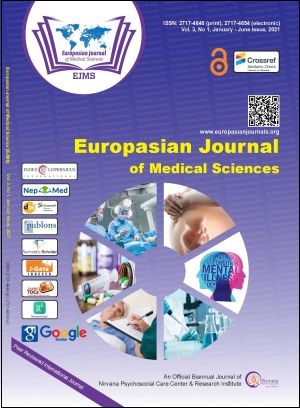Clinicopathological, Endoscopic and Radiological Evaluation of Intestinal Tuberculosis among Nepalese Patients at a Tertiary Care Center
Keywords:
CT scan, Diagnosis, Endoscopy, Intestinal tuberculosisAbstract
Background: Intestinal tuberculosis is often difficult to diagnose due to its insidious onset and nonspecific and protean manifestations. Delay or failure of diagnosis is associated with significant complications like perforation, abscess, fistula and strictures. The objective of the study was to provide a descriptive analysis of clinical, endoscopic, radiological and pathological findings in these patients.
Methods: A prospective study including 52 hospitalized patients was done between April 2018 to 2020 at Tribhuwan University Teaching Hospital. Statistical analyses were done by Microsoft excel version 16.
Results: Males were 63% while females were 37%. The average age was 37 years. 84% had abdominal pain followed by abdominal distension (50%), chronic diarrhea (51%) and cough (21%). Abnormal chest X-Ray was found in (37%) among whom (53%) had sputum positive for tubercular Bacilli. Common CT scan findings were thickening and heterogenous enhancement of bowel loops (79%), lymphadenopathy (56%) and ascites (44%). Endoscopically, commonly involved sites were terminal Ileum (95%), cecum (77%) and ascending colon (42%). Frequent finding were ulcers (83%), patulous and deformed Ileocecal valve (33%), mucosal nodularity (38%), hypertrophic mucosa (21%) and strictures (11%). Biopsies revealed granulomas in (77%) specimens. (65%) of them had central caseous necrosis. Among 10 subjects undergoing needle aspiration of lymphnodes, (70%) had central caseous necrosis. Those with coexisting peritoneal involvement had a mean ascitic fluid adenosine deaminase level of 73 ± 8 IU/L.
Conclusion: Intestinal tuberculosis remains a major concern in developing countries. A composite analysis of the clinical manifestations, CT scan, endoscopic findings and pathological examination of the biopsies aid in making a proper and timely diagnosis so as to prevent complications and mortality.
Downloads
Downloads
Published
How to Cite
Issue
Section
License
Copyright (c) 2021 Tshering Wangdi Sherpa, Rahul Pathak, Anurag Jha

This work is licensed under a Creative Commons Attribution 4.0 International License.
The author(s) retain the ownership of the copyrights for their work published in EJMS without any restrictions. Upon submission, the author(s) grants EJMS a license to publish, including to display, store, copy, and reuse the published content.
License to Publish
By submitting a manuscript to EJMS, the author(s) grant the journal a non-exclusive license to:
- Publish and distribute the content in all formats, media, and platforms (both existing and future), while identifying EJMS as the original publisher.
- Reproduce, display, and store the content in both print and online formats, including institutional and digital repositories.
- Translate, adapt, and summarize the work, including reprints, extracts, and abstracts.
- Develop derivative works based on the original content.
- Include the work in electronic databases and provide links to third-party materials.
Creative Commons Licensing
In addition to EJMS’s publishing rights, authors grant third parties the right to use, share, and distribute their work under the Creative Commons Attribution 4.0 (CC BY 4.0) International License. This allows unrestricted use of the content, provided proper attribution is given to the original author(s) and the journal.

